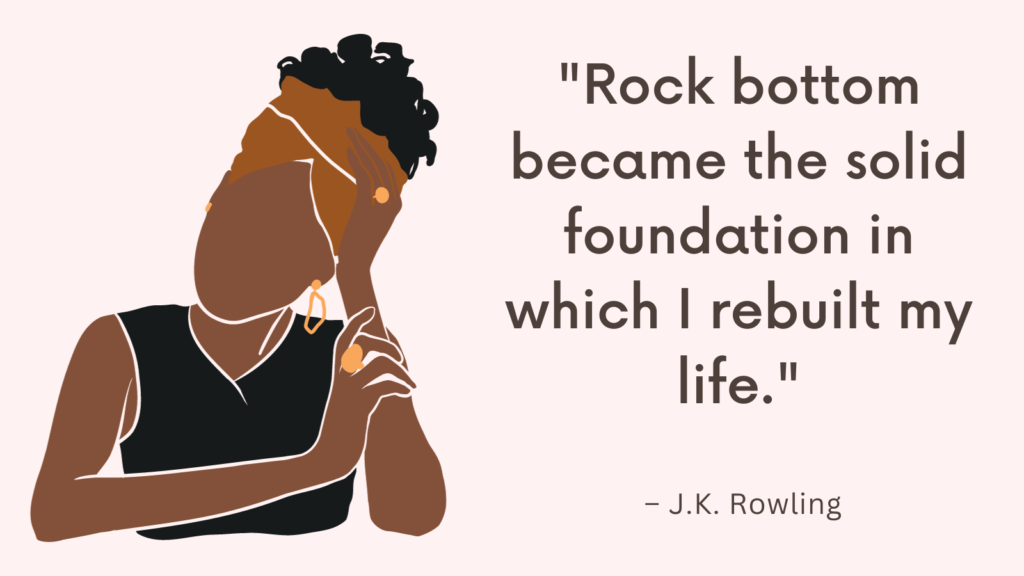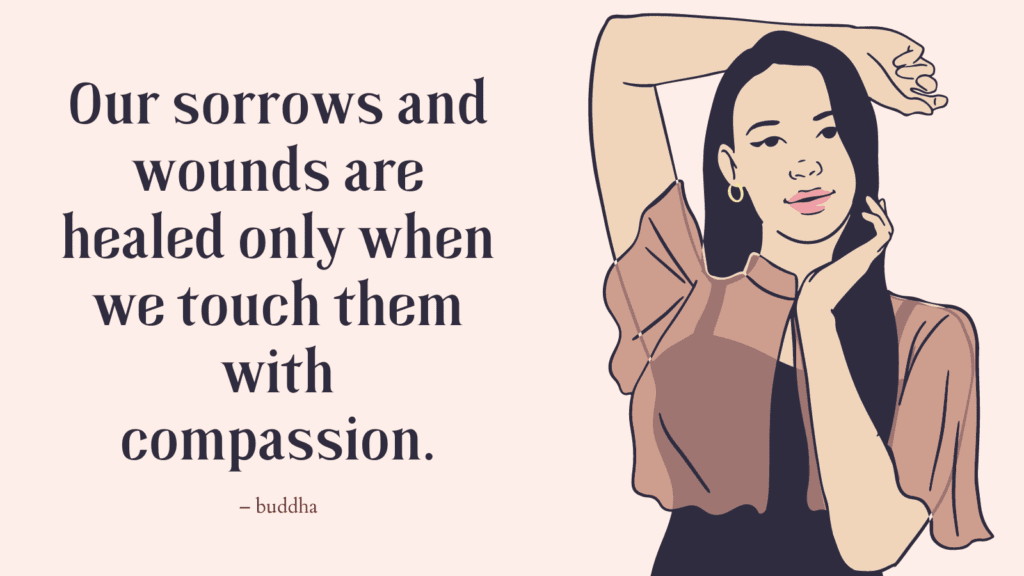Childhood trauma can have long-lasting effects on an individual’s mental and emotional well-being.
One of the ways in which childhood trauma can manifest is through the development of addiction.
In this post, you’re going to find out how childhood trauma leads to addiction.
How Childhood Trauma Leads to Addiction
1. Coping mechanism
Childhood trauma often leaves individuals feeling overwhelmed with intense emotions such as fear, shame, or anger.
Substance abuse can become a coping mechanism to numb these painful emotions and escape from the distressing memories of their traumatic experiences.
2. Self-medication
Some individuals may turn to drugs or alcohol as a way to self-medicate and alleviate symptoms of trauma-related conditions such as anxiety, depression, or post-traumatic stress disorder (PTSD).
They may find temporary relief from their distressing symptoms by using substances.
3. Brain chemistry
Trauma can affect the brain’s reward system, leading to dysregulation in the release of neurotransmitters like dopamine, which is associated with pleasure and reward. (source)
Substance use can temporarily restore balance in the brain’s reward system, providing individuals with a sense of pleasure and relief from emotional pain.
Related: 5 Stages of Addiction Recovery (+FREE Worksheets)
4. Adverse childhood experiences
Adverse childhood experiences (ACEs), including physical, sexual, or emotional abuse, neglect, or household dysfunction, significantly increase the risk of developing substance use disorders later in life.
ACEs can create a sense of disconnection, low self-esteem, and a lack of healthy coping mechanisms, making individuals more susceptible to addiction.
5. Co-occurring mental health conditions
Childhood trauma increases the likelihood of developing co-occurring mental health conditions, such as anxiety, depression, or borderline personality disorder.
These conditions, if left untreated, can contribute to the development of addiction as individuals may turn to substances for relief or self-soothing purposes.
6. Social environment
Childhood trauma can disrupt the establishment of healthy social support systems.
Individuals who experience trauma may struggle with forming and maintaining healthy relationships.
This social isolation can lead to an increased reliance on substances as a form of self-soothing or as a means to cope with loneliness and disconnection.
Related: 4 Stages of Addiction (+FREE Worksheets)
7. Reenactment of trauma
Some individuals unconsciously seek out situations or relationships that mirror their childhood trauma.
This pattern, known as reenactment, can involve engaging in risky behaviors, including substance abuse, as a way to recreate familiar dynamics from their traumatic past.
8. Neurobiological changes
Prolonged exposure to stress during childhood trauma can lead to neurobiological changes, particularly in areas of the brain responsible for impulse control, decision-making, and emotional regulation. (source)
These alterations can contribute to difficulties in resisting impulses and making healthy choices, increasing the vulnerability to addiction.
9. Learned behavior
Children growing up in households where substance abuse is present may internalize this behavior as a norm.
They may learn that substances are a way to cope with life’s challenges, perpetuating a cycle of addiction that they carry into adulthood.
It’s important to note that not everyone who experiences childhood trauma will develop an addiction.
Related: Undermothered: How to Mother Yourself Using These Practical 10 Strategies?
Signs of Childhood Trauma
Childhood trauma refers to experiences during early childhood that are emotionally or physically distressing and can have lasting effects on an individual’s mental, emotional, and physical well-being.
Childhood trauma can have a significant impact on a person’s well-being and contribute to the development of Complex Post-Traumatic Stress Disorder (CPTSD).
Complex Post-Traumatic Stress Disorder (CPTSD) is a psychological condition that can develop as a result of experiencing prolonged and repeated traumatic events, particularly in childhood or within close relationships.
CPTSD is similar to Post-Traumatic Stress Disorder (PTSD), but it encompasses additional symptoms that are associated with long-term trauma.
Some common symptoms of CPTSD include:
1. Emotional dysregulation: Individuals with CPTSD often experience intense and fluctuating emotions such as fear, anger, guilt, shame, or sadness. They may also have difficulty regulating these emotions or finding a sense of emotional stability.
2. Interpersonal difficulties: People with CPTSD may struggle with forming and maintaining healthy relationships due to trust issues, fear of abandonment, or difficulty with boundaries. They may also display patterns of self-isolation or have problems with authority figures.
3. Self-esteem issues: CPTSD can contribute to feelings of low self-worth, self-blame, and a persistent belief that one is damaged or unworthy of love and support.
4. Hyperarousal and hypervigilance: Individuals with CPTSD may be constantly on edge, easily startled, and highly reactive to potential threats. They may also have trouble sleeping, experience nightmares, or have difficulty concentrating.
5. Dissociation: Some individuals with CPTSD may experience dissociation, which can involve feeling disconnected from oneself or the present moment, as if they are observing their life from the outside.
6. Negative self-perception: CPTSD can lead to negative core beliefs about oneself, others, and the world. These beliefs may manifest as feelings of helplessness, hopelessness, or a distorted perception of danger.
Complex Post-Traumatic Stress Disorder (CPTSD) is a condition that is not formally recognized as a diagnosis in the DSM-5 (Diagnostic and Statistical Manual of Mental Disorders, 5th Edition).
However, the DSM-5 does include Post-Traumatic Stress Disorder (PTSD), which has similarities to CPTSD but also distinct differences.
Related: How To Heal From The Father Wound In 7 Steps (+FREE Worksheets)
Signs of Addiction
The DSM-5 (Diagnostic and Statistical Manual of Mental Disorders, 5th Edition) outlines several types of addictions, which are classified as substance-related and addictive disorders.
Here are some signs and criteria outlined in the DSM-5:
1. Impaired control: This could be shown by unsuccessful attempts to cut down or control substance use, cravings, or spending a significant amount of time obtaining, using, or recovering from substance use.
2. Social impairment: Substance use can have adverse effects on social relationships, leading to conflicts with family members, friends, or coworkers. It may also result in reduced participation in important social, occupational, or recreational activities.
3. Risky use: Continuing substance use in situations where it presents physical hazards, such as driving under the influence or using substances in hazardous environments.
4. Pharmacological criteria: The development of tolerance (needing more of the substance to achieve the desired effect) and experiencing withdrawal symptoms when substance use is discontinued or reduced.
5. Neglected responsibilities: Failing to fulfill important obligations at work, school, or home due to substance use.
6. Continued use despite negative consequences: Using substances even though it leads to recurrent physical or psychological problems.
It’s important to note that the severity of the addiction is based on the number of criteria met (ranging from mild to severe).
Related: How To Step Out Of Denial? Top 10 Steps To Overcome Denial When The Truth Is Heartbreaking

How to Heal From Childhood Trauma?
Healing from childhood trauma is a complex and individual process that can take time and effort. Here are some suggestions:
1. Understand and acknowledge the trauma
Begin by recognizing and accepting that you have experienced trauma in your childhood.
This acknowledgment can be the first step towards healing.
Educate yourself about trauma and its effects to gain a better understanding of what you have been through.
2. Seek professional support
Consult a therapist who specializes in trauma therapy.
They can provide a safe and supportive environment for you to explore your experiences, emotions, and beliefs related to the trauma.
Therapeutic techniques like Cognitive Behavioral Therapy (CBT), Eye Movement Desensitization and Reprocessing (EMDR), or Trauma-Focused Therapy can be effective in processing traumatic experiences.
3. Build a support system
Surround yourself with trustworthy and understanding individuals who can provide emotional support.
This could include friends, family, support groups, or online communities where you can share your experiences and feelings with people who have had similar experiences.
Related: Do I Have Trauma? Top 4 Practical Exercises To Support Your Trauma Healing
4. Practice self-care
Develop healthy coping mechanisms and self-care practices that prioritize your physical, emotional, and mental well-being.
Engage in activities that bring you joy and relaxation, such as exercise, meditation, creative outlets, and spending time in nature.
5. Express your emotions
Find healthy ways to express and release your emotions related to the trauma.
Journaling, art therapy, or talking with a trusted confidant can offer an outlet for the emotions that have been suppressed or ignored.
Related: How To Expand Window Of Tolerance? (+FREE Window of Tolerance PDF)
6. Challenge negative beliefs
Childhood trauma can often lead to negative self-perceptions and beliefs.
Work on identifying and challenging these negative beliefs with the help of a therapist.
Replace them with more positive and realistic thoughts about yourself and your future.
7. Establish boundaries
Learning to set boundaries in relationships and situations can be vital in the healing process.
Recognize your own needs and limits, and communicate them assertively.
This can help you regain a sense of control and safety.
8. Engage in grounding techniques
Traumatic memories can intrude into the present moment, leading to distress and anxiety.
Grounding techniques, such as deep breathing exercises, mindfulness, or sensory grounding (focusing on your senses), can help you stay connected to the present and reduce overwhelming thoughts or emotions.
9. Practice self-compassion
Be patient and kind to yourself throughout the healing process.
Self-compassion involves treating yourself with the same understanding and care you would offer to a loved one in a similar situation.
Acknowledge that healing takes time and allow yourself to grieve and heal at your own pace.
Remember, everyone’s healing journey is unique, and it’s essential to find what works best for you.
Related: Best 15 Inner Child Exercises: How To Connect With Your Inner Child (& Heal Your Childhood Wounds)

Conclusion
The impact of trauma can vary from person to person.
Recovery from childhood trauma and addiction often requires professional help, including therapy, support groups, and sometimes medication.
By treating both the trauma and the addiction concurrently, individuals can work towards healing and establishing healthier coping mechanisms.



